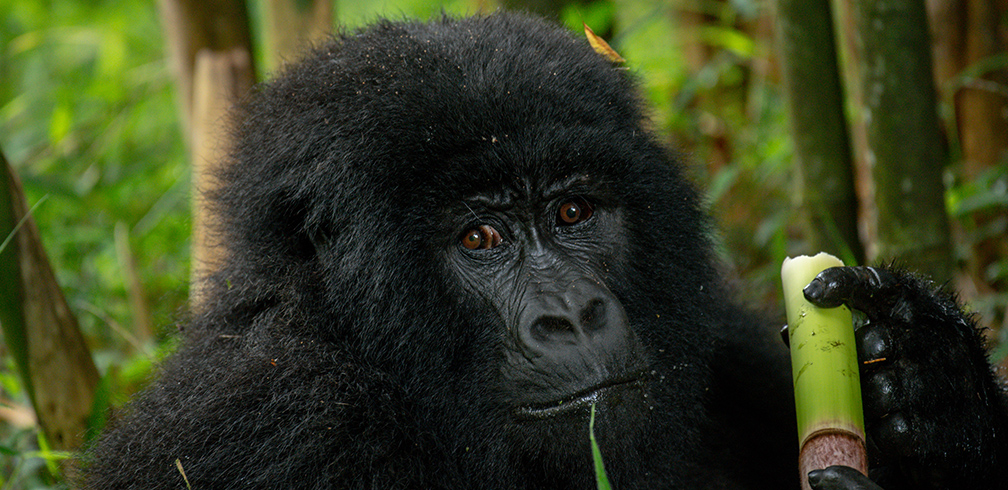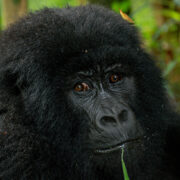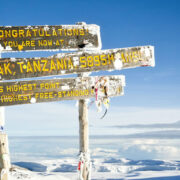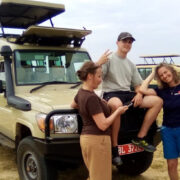
Your Complete Guide to Bwindi & Mgahinga
Few wildlife experiences rival the awe and wonder of trekking mountain gorillas. In East Africa, Uganda offers some of the world’s best gorilla trekking: Bwindi Impenetrable National Park and Mgahinga Gorilla National Park. Whether you’re after adventure, wildlife photography, or a meaningful connection with nature, this guide will help you plan every detail of a gorilla trek with confidence.
- Where to Go: Bwindi vs. Mgahinga
Bwindi Impenetrable Forest National Park is the more popular destination. It’s large, divided into sectors (such as Buhoma, Ruhija, Nkuringo, Rushaga), with many habituated gorilla families to visit.
Uganda Parks Safari
Visit Rwanda Gorillas
Mgahinga Gorilla National Park is smaller, quieter, less-visited, and includes only one gorilla family currently. It’s also unique because you can combine gorilla trekking with golden monkey tracking and cultural visits with the Batwa people.
Visit Rwanda Gorillas
- Permits & Cost
Permits are required and expensive, but they’re essential for conservation and the protection of gorillas. A gorilla trekking permit in Uganda costs US$ 800 for international visitors.
Uganda Parks Safari
The permit includes park entry, ranger guide fees, and one hour with the gorillas once located.
Uganda Parks Safari
Since demand is high and the number of permits per gorilla family is limited (only 8 people per group per day), booking at least 3-6 months in advance is highly recommended.
Ugandan Wildlife
- When to Go: Best Seasons & Conditions
Dry seasons are the best time for gorilla trekking: June – September and December – February. Trails are less muddy, climbs are safer, and visibility is better.
Wet seasons are possible too (March-May, October-November), with lush greenery, fewer crowds, and lower costs — but expect muddy, slippery trails and more rain.
Uganda Parks Safari
- Physical Requirements & What to Bring
Trekking can take anywhere from 2 to 8 hours depending on how far the gorilla family has moved and the terrain. Forests are steep, muddy, with thick undergrowth. A moderate fitness level is needed.
Uganda Parks Safari
- Gear checklist:
- Sturdy hiking boots
- Waterproof jacket / rain gear
- Long sleeves and long pants to guard against insects / thorny undergrowth
- Gloves, gaiters
- Daypack, water, snacks
- Camera (with no flash) and binoculars
- Safety & Rules
Maintain a minimum distance of 7 metres from gorillas. Flash photography is prohibited.
Uganda Parks Safari
Don’t go if you’re sick. Guides will usually bar visitors with contagious illness to protect gorilla health.
Ugandan Wildlife
Use local guides and trackers who know the forest and gorilla behavior. Porters are often available to help carry bags or help you on difficult sections.
Uganda Parks Safari
- Conservation & Community Impact
Many of the fees from permits go toward protecting gorilla habitat, supporting ranger salary and training, and benefiting local communities.
Tourism helps reduce poaching and brings income to people who live around the parks. Staying in local lodges, buying from local craft sellers, etc., helps ensure the benefit stays local.
Conclusion
Gorilla trekking in Uganda is an experience of a lifetime — challenging, humbling, and deeply rewarding. With the right planning, you’ll meet one of nature’s most magnificent creatures, while supporting conservation and local communities. Whether you go to Bwindi Impenetrable Forest or Mgahinga, you’re in for something magical. Plan ahead, travel respectfully, and let Uganda’s gorillas leave a mark on your heart.
Recent Posts
Your Complete Guide to Bwindi & Mgahinga
Climbing Mount Kilimanjaro: Routes, Tips.
Top Safari Destinations in East Africa You Must Visit
All Categories

Thailand





